The Philippines is a vibrant and culturally diverse country with over a hundred indigenous communities spread across the islands. The UNDP estimates there are 14-17 million indigenous peoples in the country, spanning 110 unique ethno-linguistic groups.
One of those communities is the Ifugao Peoples, a community with a unique language, culture, history, and heritage of craftsmanship. Like many indigenous peoples in the Philippines and around the world, the Ifugao Peoples face serious challenges in preserving their cultural identity.
WHO ARE THE IFUGAO PEOPLES?
The Ifugao peoples are an indigenous cultural group located in Ifugao Province within the Cordillera mountains of Northern Luzon. They're known for their colourful handwoven textiles, their resistance against Spanish colonialism, and their rich ceremonial traditions. They’re also renowned for creating the famed Ifugao Rice Terraces, and are currently the stewards of the land.
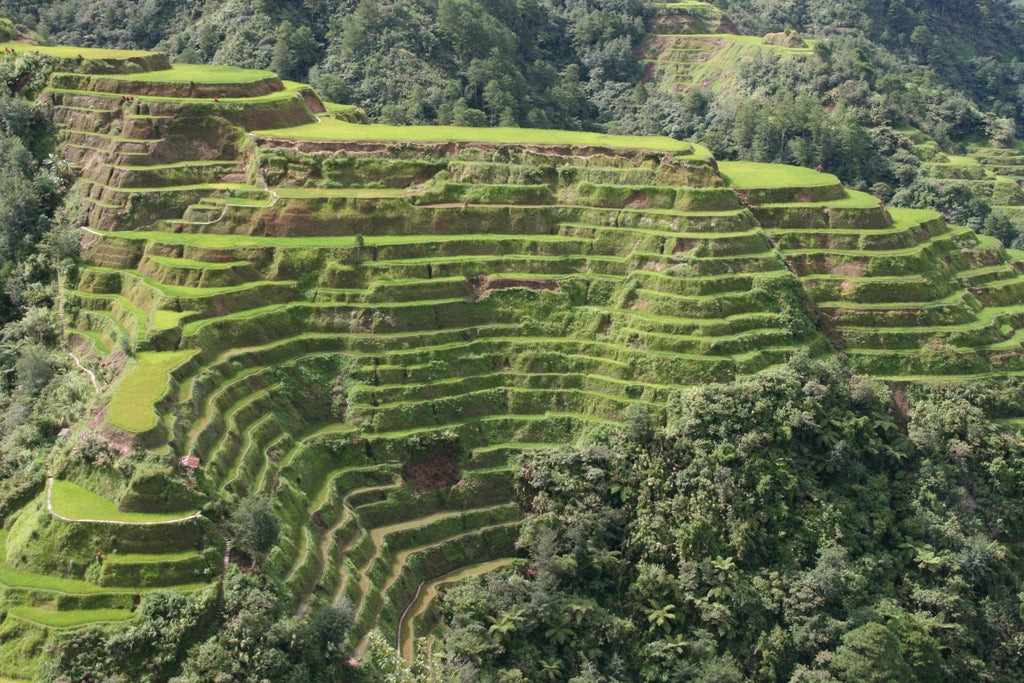 Photo by Roundtheworld at wts wikivoyage
Photo by Roundtheworld at wts wikivoyage
The Ifugao Rice Terraces are a UNESCO World Heritage Site long considered one of the Eight Wonders of the World and the “stairs to heaven.” The Ifugao are the stewards of the rice terraces, living off the land and farming rice for daily sustenance.
When the Ifugaos are not farming, they rely on traditional crafts such as woodworking, carving, and weaving as a way to earn a living, which they do during off seasons when they are not in the fields. Many of the Ifugao are weavers, renowned for their beautiful textiles and intricate patterns.
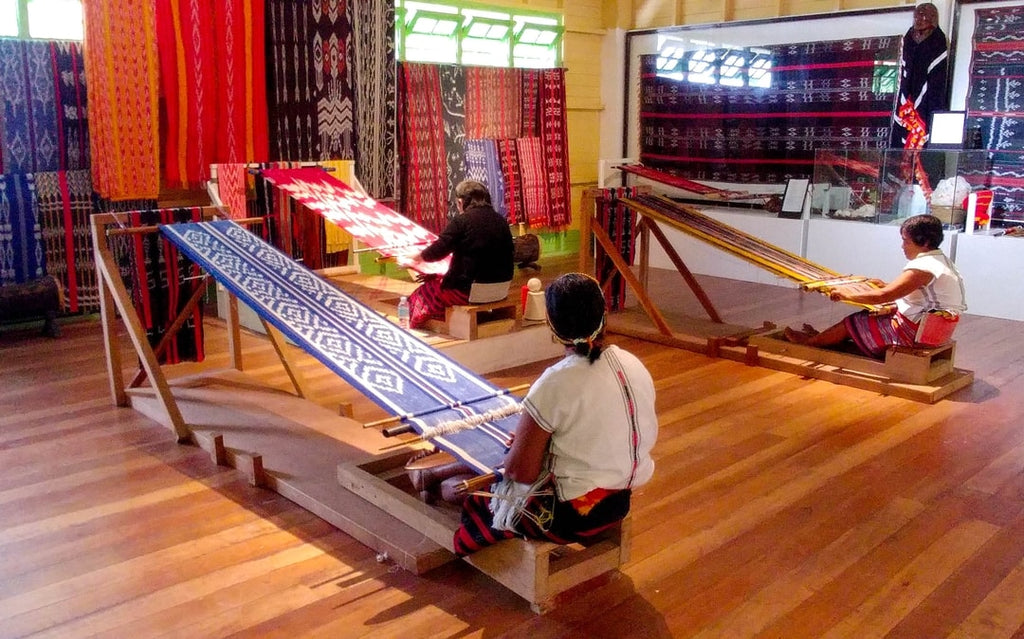 Many Ifugao rely on other sources of income outside of farming. Pictured here are Ifugao weavers at the Ifugao heritage center in Kiangan using a backstrap loom. Photo by Anna Bueno, CNN Philippines Life
Many Ifugao rely on other sources of income outside of farming. Pictured here are Ifugao weavers at the Ifugao heritage center in Kiangan using a backstrap loom. Photo by Anna Bueno, CNN Philippines Life
“We have to think of other sources of income because planting alone will not sustain us. But we also refuse to abandon our terraces because of our desire to let the tourists see their beauty when they come to visit here. Planting rice on terraces is also part of who we are as Ifugaos,” terraces farmer Robert Duyugen said
Lack of economic opportunities
Although the Ifugao have been long admired for their beautiful textiles and crafts, the majority struggle to make ends meet. And despite the regular flow of tourists to the Banaue rice terraces, many of the Ifugao end up selling their wares far below their value.
There are a multitude of challenges facing the Ifugao community:
- A flood of cheap and mass produced goods from abroad mean the Ifugao are left selling their pieces for extremely low prices to tourists and designers.
- Designers, brands, and even weaving communities from other regions of the Philippines copy Ifugao designs without crediting or giving financial return to the Ifugao peoples.
- Many Ifugao are fleeing in search of more opportunities, causing a shrinking and aging population with few youth left to carry on Ifugao traditions.
Because of the challenges facing the Ifugao, many of the terraces have been abandoned, left empty with no one to farm or maintain the land. Many of the weavers have stopped weaving. And the customs are being lost.
At Cambio & Co., our partners AKABA and ANTHILL Fabric Gallery are extremely involved with indigenous weaving communities and deeply passionate about preserving weaving traditions. However, even our most progressive and involved partners have struggled to ethically source weaves from the Ifugao peoples, indicating the dire state of Ifugao culture.
The Ifugao peoples are one of the most endangered indigenous communities in the Philippines. If we don’t take action today, we risk losing Ifugao culture permanently.
WHY WE’VE PARTNERED WITH SAVE THE IFUGAO RICE TERRACES (SITMo)
SITMo is a grassroots non-profit in the Philippines made up of individuals and people’s organizations. Together, they work to conserve the heritage of the Ifugao peoples through rural development, educational programs, and advocacy for indigenous peoples’ rights. SITMo creates sustainable livelihood for the Ifugao as a pathway to save the rice terraces and ensure the continuation of the Ifugao way of life.
What does weaving have to do with rice terraces?
The Ifugao peoples are the stewards of the land, maintaining and repairing the rice terraces for centuries. If we want to ensure the continued existence of the rice terraces, we have to support the people who maintain it. This means ensuring the Ifugao peoples can earn a sustainable income from crafts such as weaving, and to provide hope for future generations so they choose to stay in their communities and carry on Ifugao traditions.
One of the key leaders of SITMo is Marlon Martin, a member of the Ifugao community. He is also the founder of the Indigenous Peoples Education Center, a movement aiming to preserve Ifugao cultural traditions through educating youth.
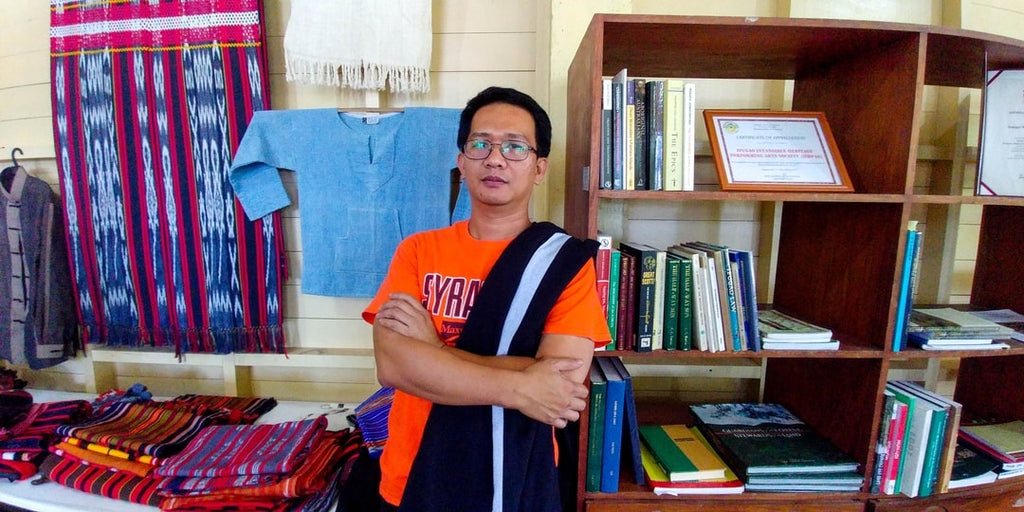 Marlon Martin, Chief of Save The Ifugao Terraces Movement (SITMo) and founder of the Indigenous Peoples Education Center. Photo by Anna Bueno, CNN Philippines Life
Marlon Martin, Chief of Save The Ifugao Terraces Movement (SITMo) and founder of the Indigenous Peoples Education Center. Photo by Anna Bueno, CNN Philippines Life
We connected with Marlon through our good friend and cultural anthropologist Lynne Milgram. Marlon has been a leading advocate in the Ifugao preservation movement and has often spoken out against cultural appropriation of indigenous textiles.
Currently, Ifugao culture, history, and traditions are not being taught in the school curriculum, so there is no other way for Ifugao youth to learn about their own heritage. SITMo has taken matters into their own hands and has created youth education and training programs for young Ifugao across the province.
SITMo also helps Ifugao to sell their pieces at ethical and fair prices, and advocates for their rights. Marlon Martin and the team at SITMo have helped raise awareness for the plight of the Ifugao peoples and its urgency.
COMBATTING CULTURAL APPROPRIATION
Indigenous textiles have become more popular the last few years, which has benefited many indigenous communities in the Philippines, but has also created new challenges.
The Ifugao peoples are deeply religious and incorporate sacred textiles into their religious ceremonies. The Ifugao death blanket (also known as Ga’mong) is a sacred weave the Ifugao use to wrap their dead. Unfortunately, designers and brands have begun selling the death blankets as table runners, tops, pillow covers, and an array of everyday uses without understanding the meaning behind the textile.
“This is a true sign of disrespect not only for the living who are mourning, but also for those who have passed and are seeking direction.”
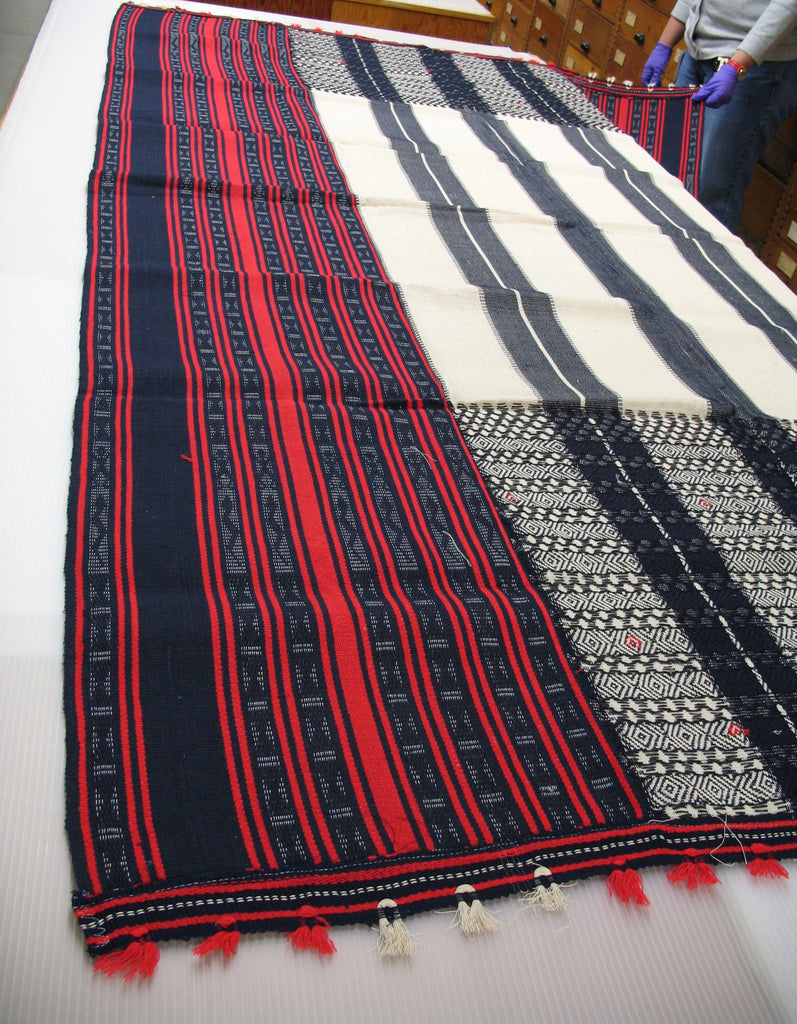 Photo credit Yale Museum of Natural History
Photo credit Yale Museum of Natural History
The Ifugao death blanket is a sacred textile that’s used to wrap the Ifugao dead. The blankets are woven with specific patterns so the ancestors can easily find the lost souls of the dead and reunite with her in the afterlife. Unfortunately, many designers and brands have begun using the Ifugao death blankets as table runners, cushions, dress patterns, etc. This is a true sign of disrespect to Ifugao peoples.
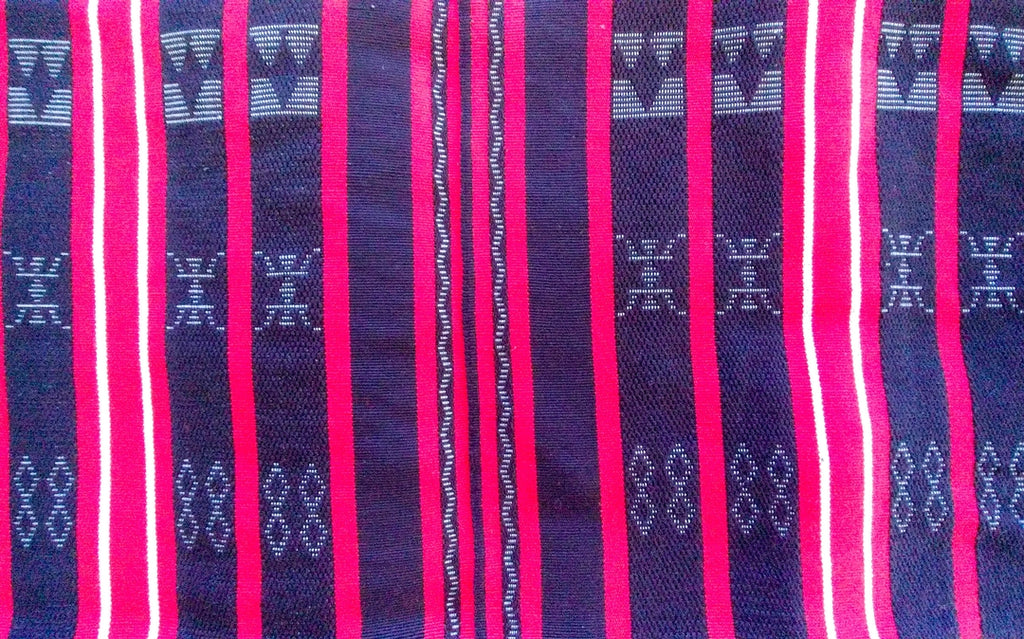
Ifugao weaves are composed of multiple motifs and patterns that have different meanings and tell a story. Here pictured Kiangan ceremonial skirt used only for certain rituals, woven with star, double mortar, swallow, and fern designs. Photo by Anna Bueno, CNN Philippines Life
It’s important to consider that many weavers sell their textiles because they simply need something to eat that week. Although it may pain weavers to sell death blankets for non-ceremonial purposes, they often do not have other options.
Adding insult to injury, there has been a rise of ‘Ifugao-inspired’ designs on the market. Designers, brands, and even neighbouring communities have begun copying Ifugao designs and re-selling them for profit without including the Ifugao peoples. Considering the highly vulnerable state of the Ifugao identity, this is extremely damaging and adds to the endangered status of the Ifugao peoples.
WHAT YOU CAN DO
Previously, Cambio & Co. partnered with SITMo to raise funds for youth apprenticeship and training programs for Ifugao youth. We asked Marlon about other ways people could directly support SITMo on an ongoing basis.
The best way? Make a donation. The second best? Tell others about their work.
Since January 2018, SITMo has run education and training workshops on Ifugao cultural appreciation and tradition for 1400 youth aged 10 to 12 years old. They also conducted workshops on heritage appreciation for 116 teachers in the surrounding region.
Your donations to SITMo can help maintain the Ifugao cultural library, and support continued education of youth and teachers by funding transport from surrounding villages and covering meals.
LEARN MORE
We're proud to have been one of SITMo's fundraising partners and we're committed to help share their mission. We’ve compiled key resources to help you learn more about SITMo and the Ifugao peoples.
- Visit Save The Ifugao Terraces Movement on Facebook. Share this blog post and spread awareness of SITMo.
- Textile Tribes of the Philippines: The Vanishing Ifugao of Banaue on Haute Culture
- Do We Give Proper Credit To The Creators Of Our Indigenous Textiles? By Anna Bueno on CNN Philippines Life
- 11 Ifugao Symbols You Can Actually Wear By Steph Sison on Preview PH
- Kandama Collective: A small but growing socially conscious brand that creates ethical fashion accessories in partnership with Ifugao weavers. There’s also an excellent article from Rappler about Kandama’s social impact.
Gelaine Santiago
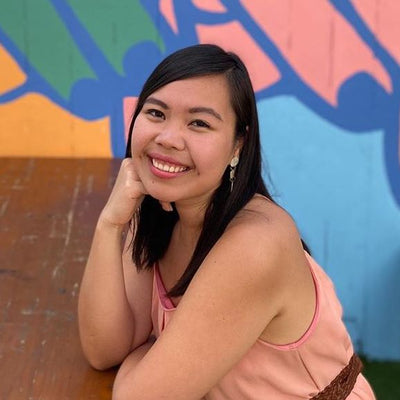
Gelaine is a social entrepreneur, an online storyteller, and a passionate advocate for diversity and ethics in business. She’s the co-founder of Cambio & Co., an e-commerce fashion company working with Filipino artisans to celebrate Filipino craftsmanship, culture, and heritage. Gelaine is also one of the founders of Sinta & Co., the world’s first conscious Filipino wedding boutique. She was named one of RBC’s Top 25 Canadian Immigrants of 2019. Find her on Instagram @gelainesantiago and www.gelainesantiago.co




Thanks this helps a lot. I’m very thankful if you send me more link about this study.
Leave a comment